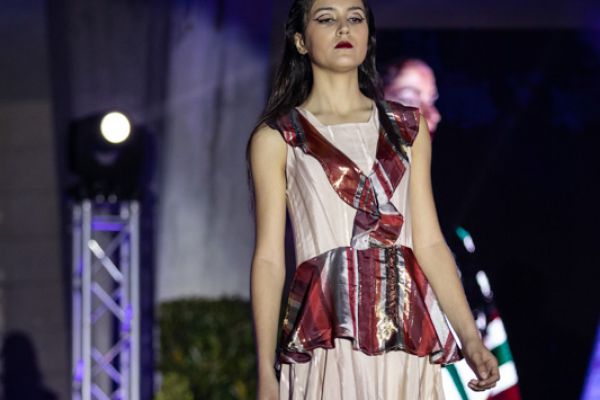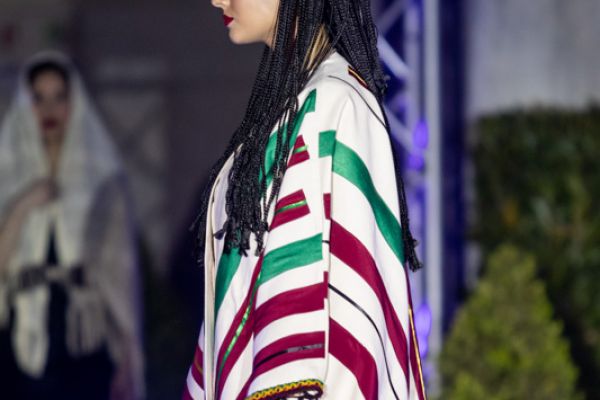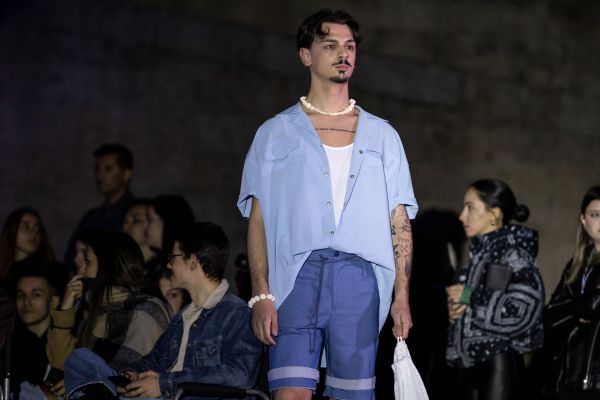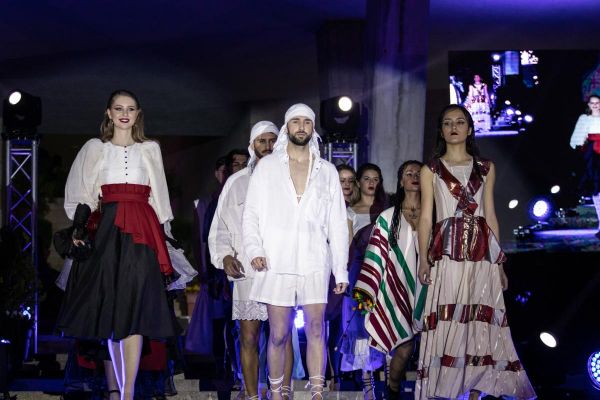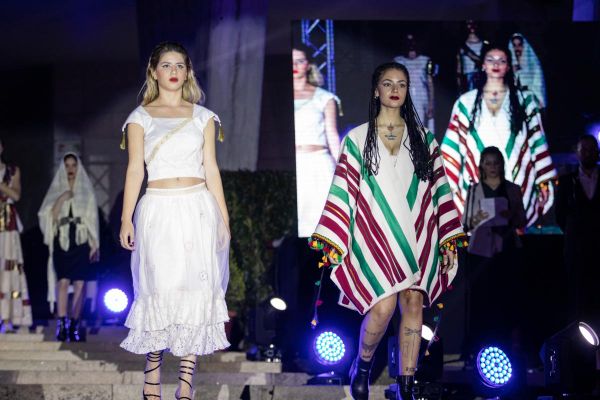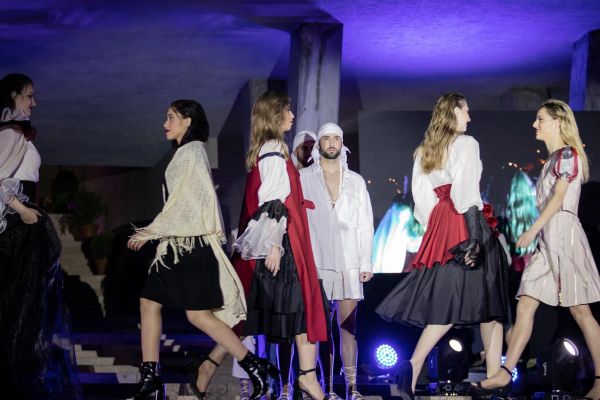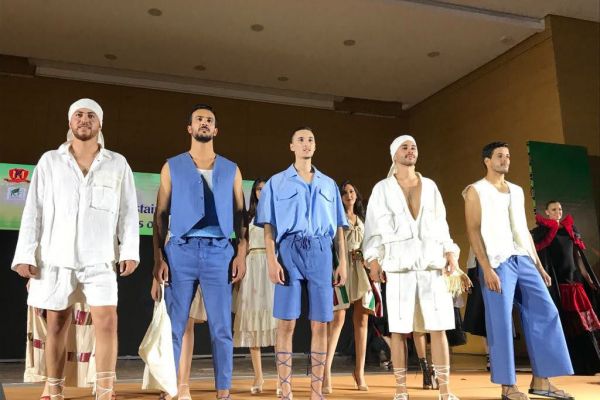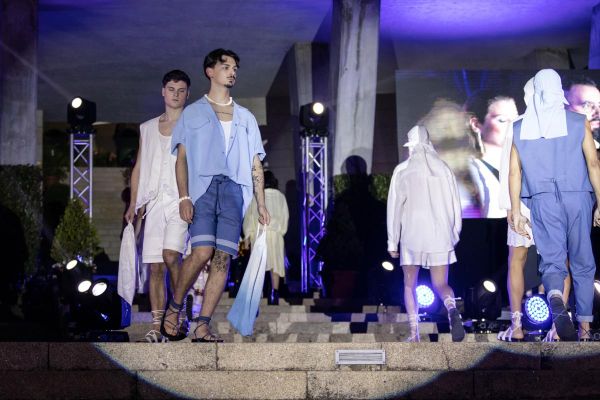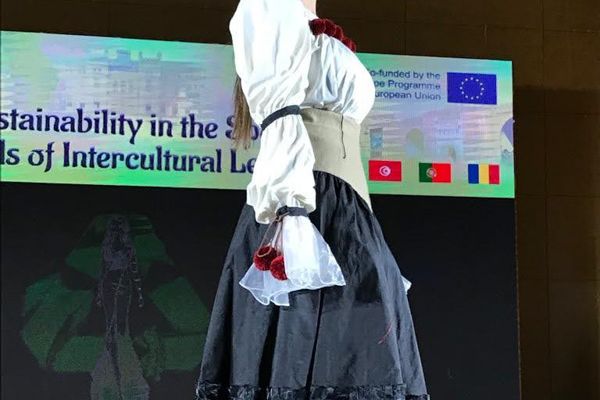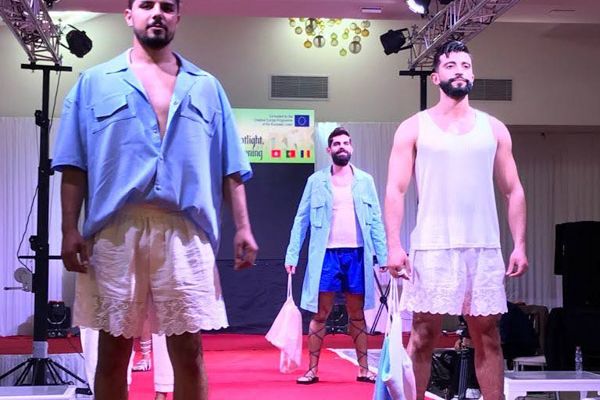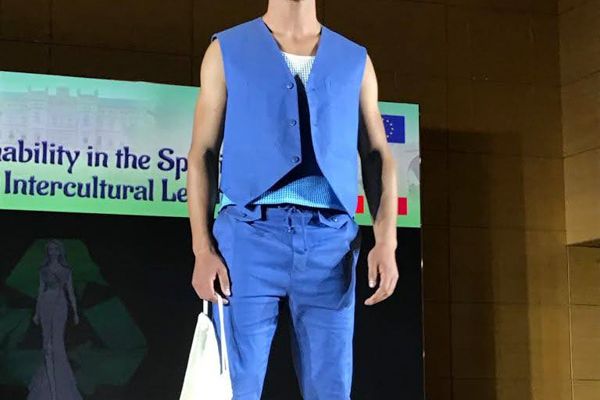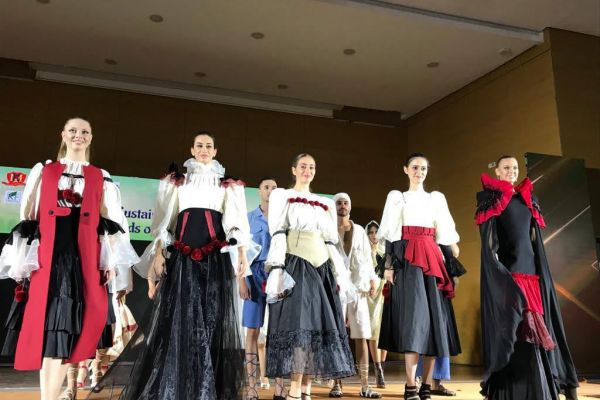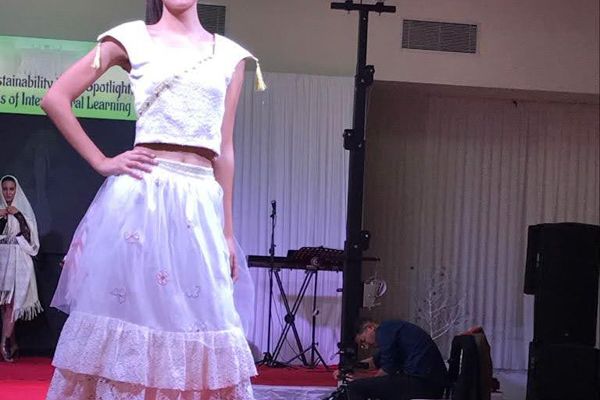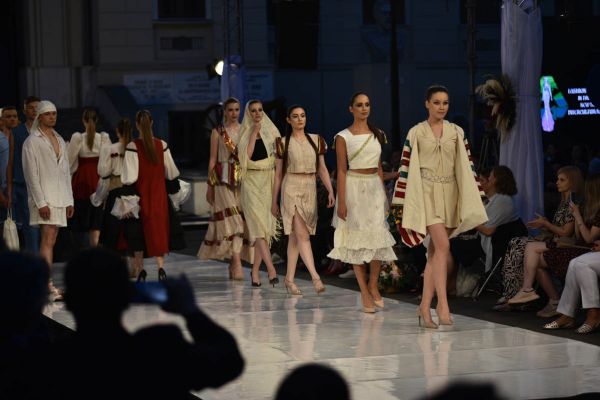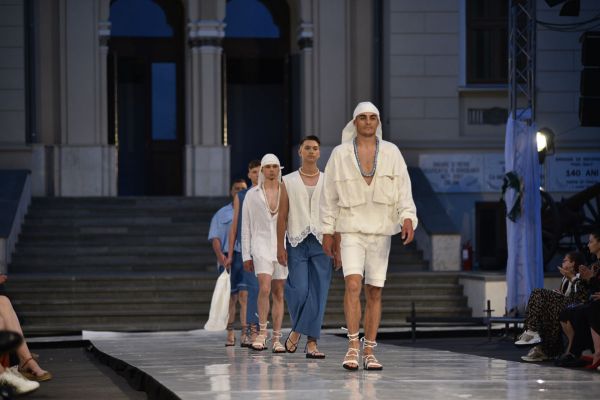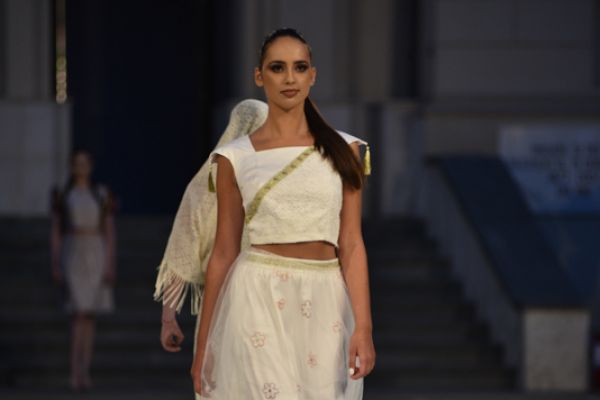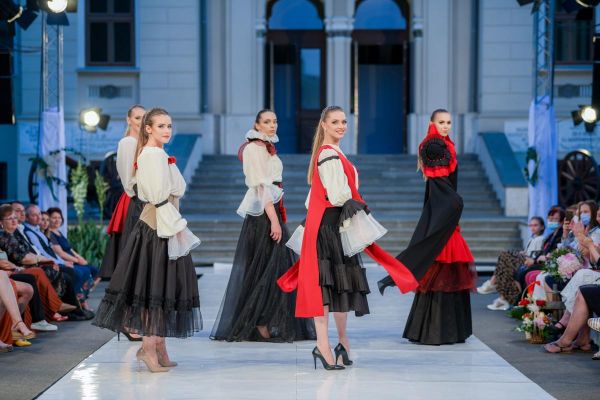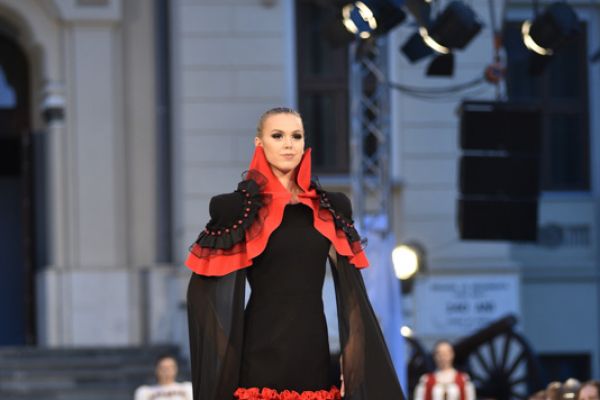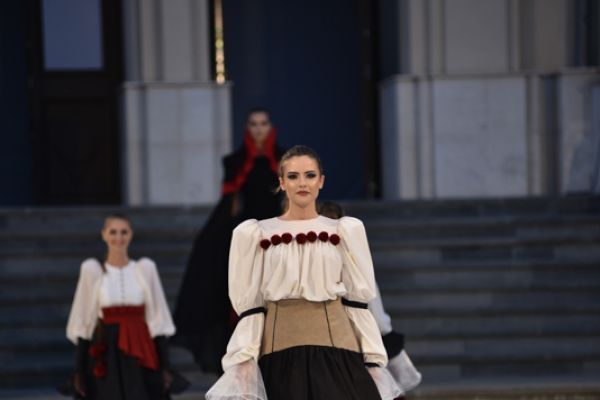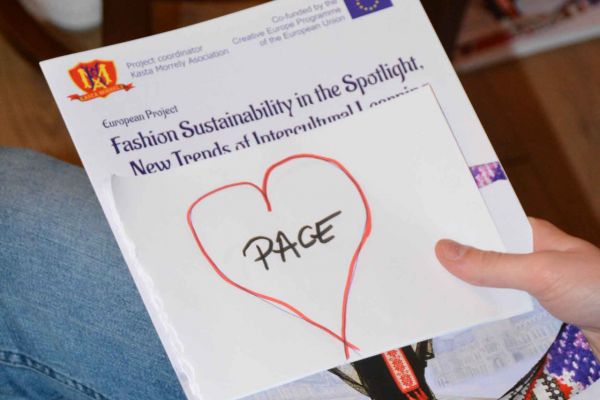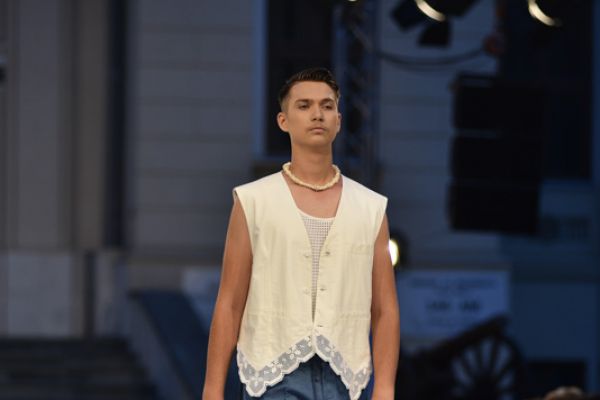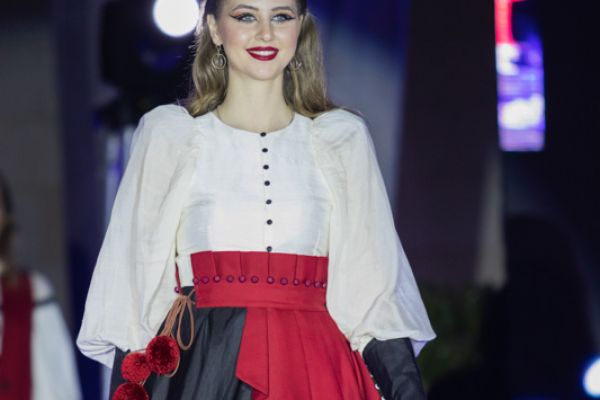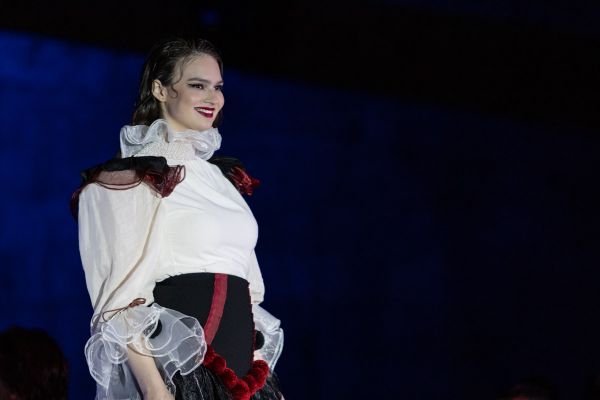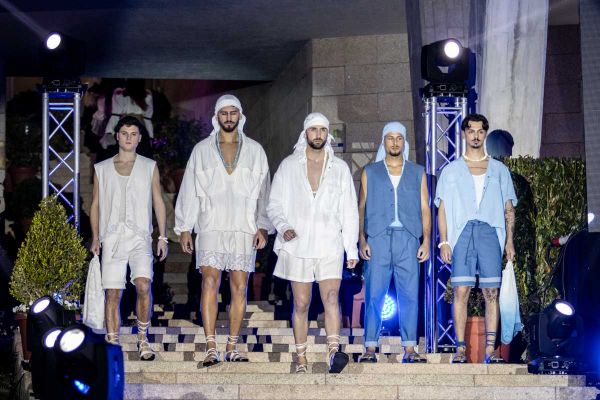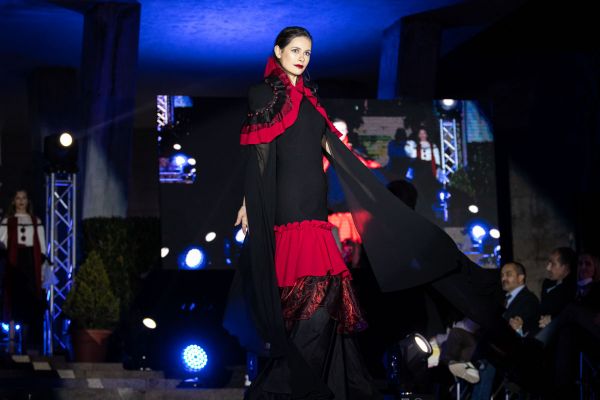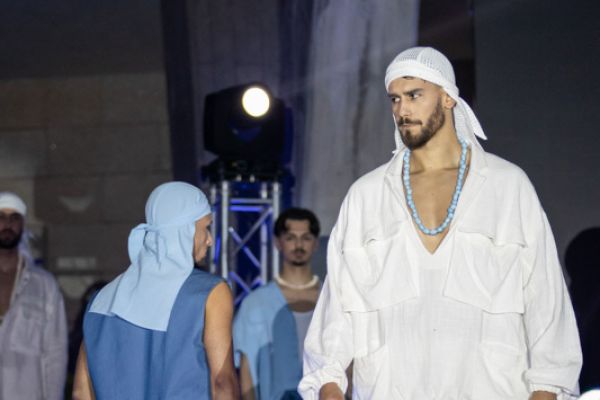Innovation: Intercultural sustainable clothing Romania – Tunisia – Portugal
Promoting traditions in clothing design and sustainable fashion were brought together in a common process of creating two fashion collections Romania – Tunisia – Portugal.
The project included in the complexity of its activities the creation of two sustainable fashion collections created by an international team of designers comprising the company Katty Fashion from Romania, the designer Rita Sa from Portugal and students and master students from Sfax University in Tunisia.
Collection 1

The collection was made respecting the principles of sustainable fashion through the materials used (natural materials and recycled materials) and the way of making (promoting and putting in value the principles of hand made and zero waste) and the traditional specifics of each country represented.
The Katty Fashion team from Romania achieved its objectives within the project by presenting the advantages of using 3D technology in the fashion industry.

3D Design technology was the base for the creation of the two collections based on sustainable principles of waste reduction, the possibility to compare the designer’s vision with physical products, promoting sustainability in the fashion industry in the product development phase, intercultural learning and collaboration:
“Under the sign of sustainable fashion, the 3D technology implemented by Katty Fashion designers allowed the launch of Zero Waste services and alignment with current industry trends, taking into account the sustainable impact of reducing waste, increasing energy efficiency and reusing digital data such as body avatars, virtual prototypes and digital style features. The benefits of these techniques were put in value in the process of co-creation of the two clothing collections within the project” concluded Julia Liliana Mihaela Butucă, General Manager of Katty Fashion.















The collection that present the traditions from Tunisia were made by a team of 36 students, master students and doctoral students under the guidance of Sfax University professors.
The students are:
Khouloud Bouaziz
Nour Bourmech
Takoua Tabakh
Dorra Ben Amor
Emna Rekik
Sana Ayedi
Wouroud Turki
Hazar Bouaziz
Chaima Ayedi
Nouha Ksouda
Manel Toumi
Anouare Louati
Hanen Zribi
Hela Mnejja
Mahrez Ashur
Israa Boujelben
Asma Ayedi
Khouloud Chaari
Nour El Houda Kerdi
Nisrine Gharbi
Mariem Bouattour
Lina Fgaier
Jihen Zaidi
Amal Jabeur
Ibtihel Tounsi
Sarra Mahfoudh
Ons Louizi
Sawsan Ben Amor
Yasmine Gharbi
Hanen Ben Nouma
Rahma Triki
Ameni Sahnoun
Yessmine Ghorbel
Manel Ktari
Olfa Triki
Walid Abbes
“The main concept of the first collection was to use traditional graphics and techniques, traditional fabrics combined with a trendy style, a modern style included in the same model. We applied the digitization of this collection using the innovative laboratory of our University which includes simulation solutions from body scanning to product design and realization and this digitization can help reduce the material used in the production process” explained Amine Haj Taieb, Executive Director and studies Director of the Superior Institute of Arts and Crafts, Sfax University, Tunisia.

The collection made in Portugal promote the cultural heritage in clothing design in harmony with the principles of slow fashion.
“We had a series of meetings with the Municipality of Barcelos to identify the traditional motifs for our collection and our Municipality suggested we use the Crivo Embroidery for which Barcelos has the trademark because it is handmade and involves a lot of care, as found in the collection presented. We selected our designer, Rita Sa, a young designer and she selected materials that were used in ancient times over which Crivo embroidery is applied, and the whole process was done manually” explained Alexandre Coutinho, President of the Intercultural Association for All, Portugal .

The fashion collections have contributed to raising awareness of the importance of intercultural cooperation in the creative industries, promoting artistic communication through clothing design and developing practical methods of transposing tradition into a modern form adapted to contemporary society.
SEE THE ENTIRE FIRST FASHION SHOW OF THE COLLECTION 1:

